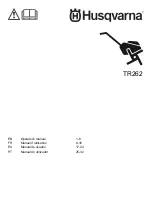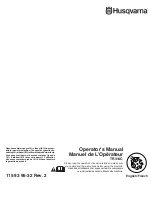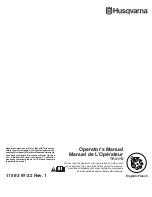
INSTRUCTIONS
11
INTRODUCTION
Thank you for purchasing the Active Aqua Series Chiller. The chiller represents a significant
step forward in horticultural chiller engineering, offering state of the art technology at highly
competitive prices. With this chiller, water temperatures for reservoirs can be quickly and
economically maintained. The super silent design results in significantly lower noise levels which
are quieter than any other similar chillers. The Active Aqua Series Chillers have a strong chassis
with an ABS plastic housing which is anti-rust and anti-corrosive, ensuring that the chiller does
not look out of place in any setting. For a complete understanding of this chiller, we recommend
reading this instruction manual thoroughly.
SUGGESTIONS FOR SAFE OPERATION
Several symbols are used in this manual and on the product itself which are aimed at promoting
proper and safe operation in order to prevent personal injuries or damage to the chiller. Please
familiarize yourself with the symbols below before reading the manual or trying to operate the
chiller.
TERMS AND SYMBOLS
Hazard levels will be indicated in writing or shown by pictures. The symbol on the left provides
general emphasis of the hazard, but specific details of the action which must be taken will be
shown by a picture or explanation near the symbol.
This term indicates the possibility that continuing to operate the chiller while ignoring this
warning or operating the chiller incorrectly, may cause personal injury or equipment damage.
This symbol advises you of a potential hazard which should be noted (including danger and
warning).
This symbol advises you of a mandatory action which must be taken in order to avoid danger.
This symbol advises you of an action which is prohibited in order to avoid danger.
WHERE TO INSTALL
1. Do not install the chiller outdoors. (Fig. 1)
2. Place the chiller in a ventilated space away from inflammables, high temperatures, direct sunlight,
moisture and dust. (Fig. 2)
3. Place the unit on a horizontal stable surface. (Fig. 3)


































